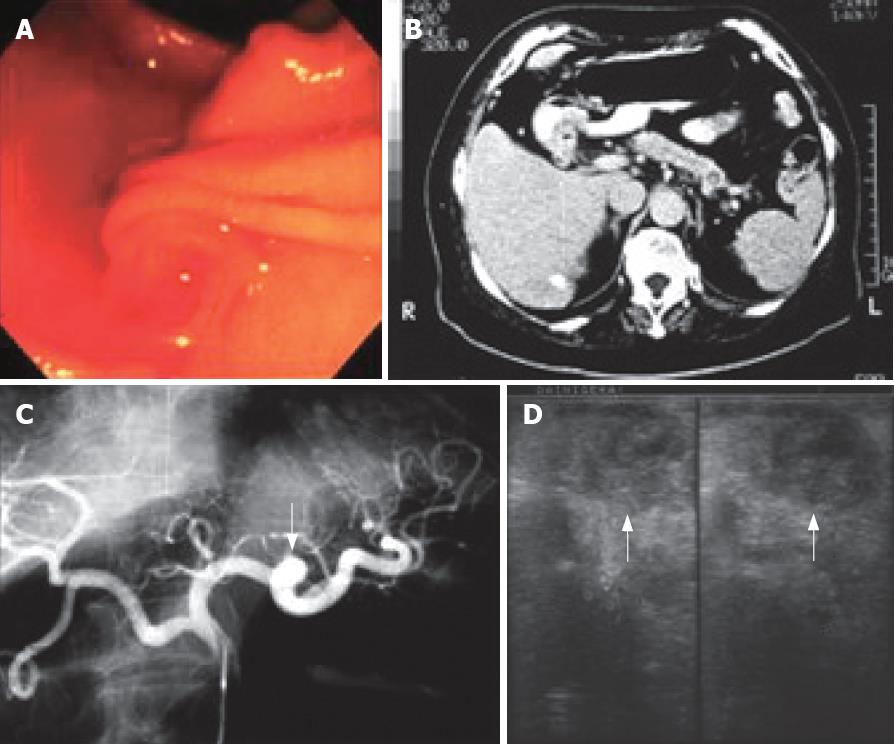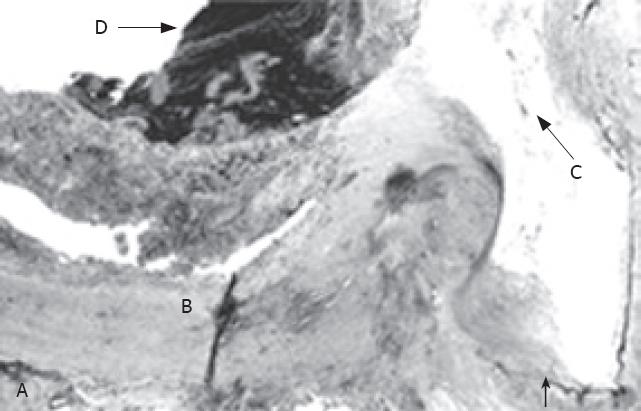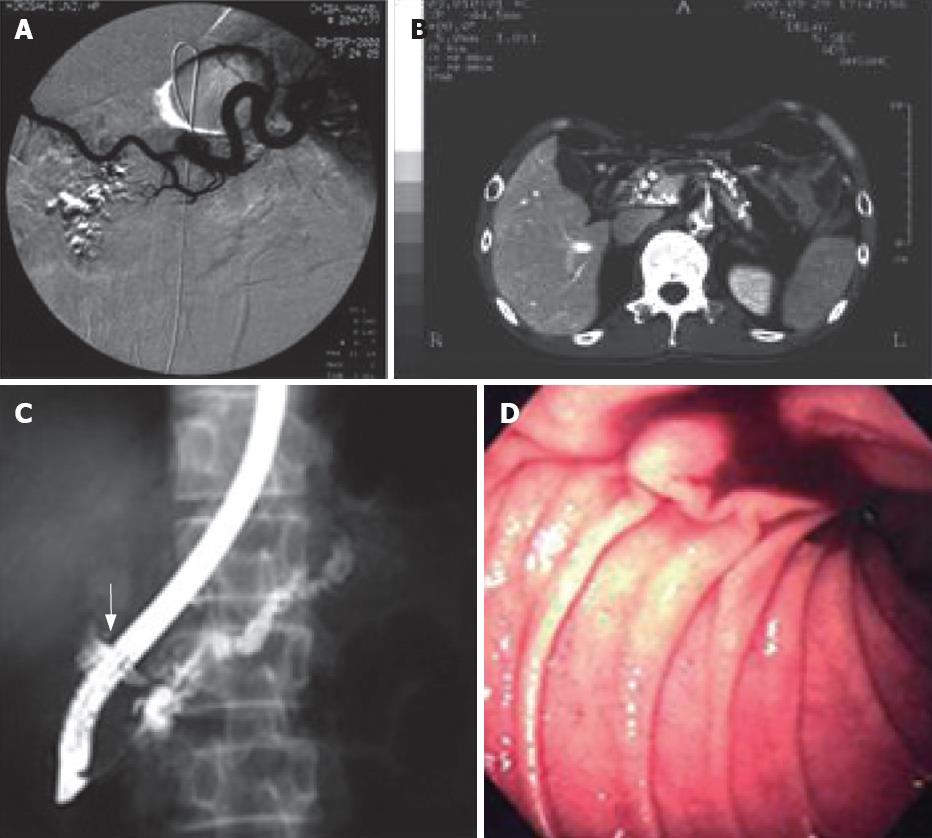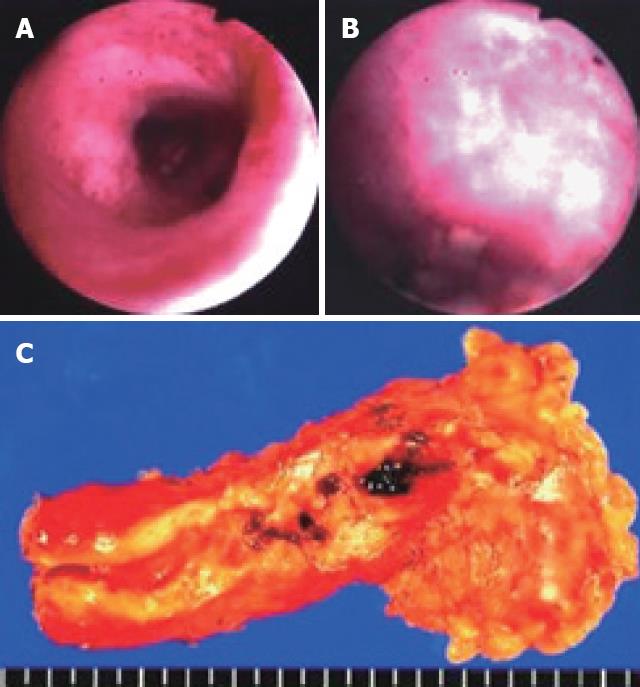Copyright
©2008 The WJG Press and Baishideng.
World J Gastroenterol. May 7, 2008; 14(17): 2776-2779
Published online May 7, 2008. doi: 10.3748/wjg.14.2776
Published online May 7, 2008. doi: 10.3748/wjg.14.2776
Figure 1 Case 1.
Pseudoaneurysm of splenic artery communicating with pancreatic duct. A: Endoscopy reveals bleeding from papilla of Vater; B: CT scan shows a cystic mass at tail of pancreas; C: Angiography identifies aneurysms at distal portion of splenic artery and right hepatic artery (arrow); D: Operative ultrasonography demonstrates a low echoic mass at body of pancreas suspected as a hematoma (arrow).
Figure 2 Histology of Case 1.
A: Pancreatic parenchyma; B: Wall of pseudoaneurysm of splenic artery; C: Orifice of pseudoaneurysm into pancreatic duct; D: Hematoma.
Figure 3 Case 2.
Pseudoaneurysm in pancreatic pseudocyst. A: Angiography failed to detect a bleeding point; B: CT scan shows multiple calcifications at the whole pancreas and dilatation of main pancreatic duct; C: Endoscopic retrograde pancreatography displays a dilatated branch of pancreatic duct at head of pancreas (arrow); D: Endoscopy reveals bleeding from papilla of Vater.
Figure 4 Case 2.
Intraoperative pancreatoscopy and specimen. A: Pancreatic head by pancreatoscopy; B: Pancreatic tail by pancreatoscopy, and bleeding source was seen; C: Bleeding source at pancreatic tail.
- Citation: Toyoki Y, Hakamada K, Narumi S, Nara M, Ishido K, Sasaki M. Hemosuccus pancreaticus: Problems and pitfalls in diagnosis and treatment. World J Gastroenterol 2008; 14(17): 2776-2779
- URL: https://www.wjgnet.com/1007-9327/full/v14/i17/2776.htm
- DOI: https://dx.doi.org/10.3748/wjg.14.2776












